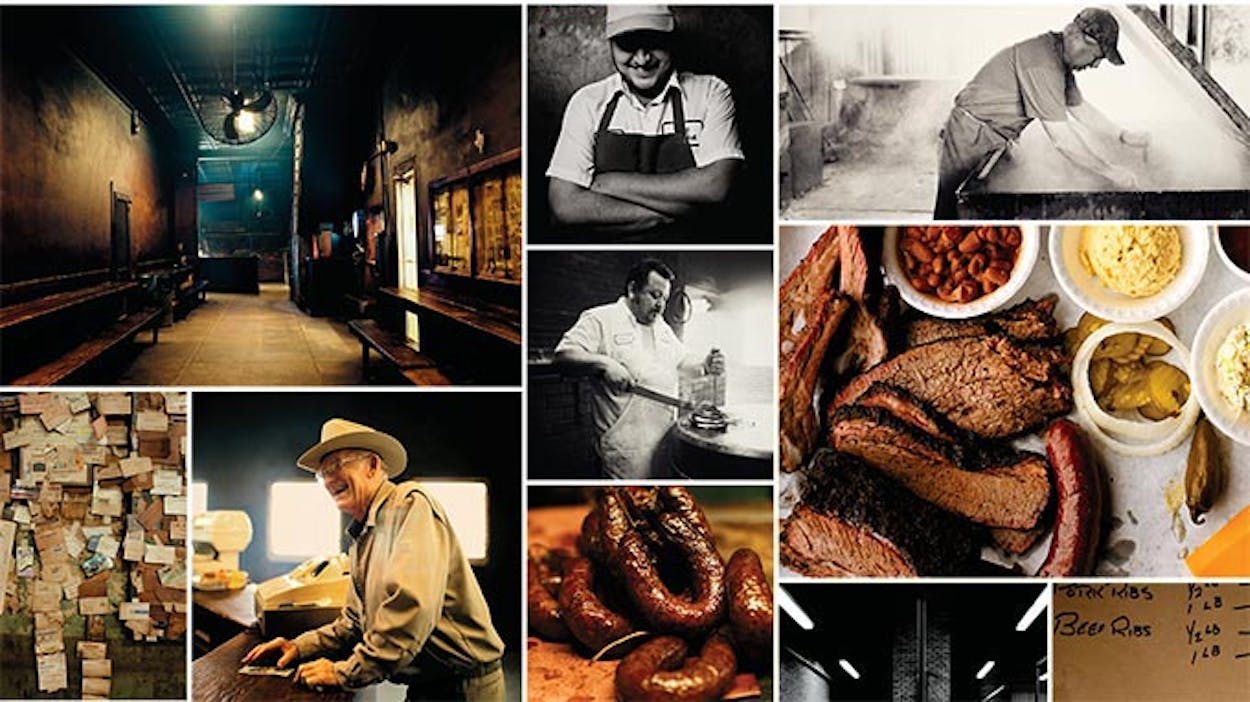“You’ll be eating in your car most of the time.” The younger writers looked alarmed. Eating in your car? The speaker, senior editor Mike Hall, was addressing the eighteen writers, editors, and fact-checkers who had signed up to be eaters on the 2008 Texas Monthly barbecue team. Spread across the conference table was a smoke-impregnated feast from Smitty’s Market, in Lockhart. Mike clutched a massive pork rib. “So order your barbecue to go,” he said, waving the rib. “You’ll need to hit at least five places a day or you’ll never get through.”
This is our third feature on the state of Texas barbecue. From the day we published our first, in 1997, readers have continually inundated us with love letters and brickbats. Early this year, we compiled a spreadsheet of these tips, along with the top fifty places from our last barbecue issue, in 2003, and all the other joints our research had unearthed. Regions were assigned and score sheets handed out. In urban areas the danger was overeating—the record number of stops in one day was nine, in Central Texas. In West Texas, the eater risked starvation just driving between lunch one and lunch two. By the time it was all over, we had racked up 14,773 collective miles by car and plane and visited 341 places (the most by one person was 56).
So what did we find? The state of our barbecue union is strong, but change is afoot. Only thirteen joints from 2003 carried over to the 2008 list. Four of our top five were repeats, but a newcomer nabbed the number one spot (see Snow’s BBQ). The quartet of brisket, sausage, ribs, and chicken still rules, but pulled pork is moving in from Dixie (hooray!) and smoked turkey is omnipresent (yech!—this is deli meat with a veneer of smoke). Sadly, few places bother to make their own sides anymore, as purveyors such as Sysco offer mass-produced tubs at irresistibly low prices.
But the biggest change over the past five years is that the gas-burning commercial smoker is gaining ground (for an explanation of how it differs from a traditional pit, see PITS). To give the devil his due, this contraption has brought acceptable barbecue to areas where it hardly existed, like the Rio Grande Valley. The danger is that it will replace traditional pit-smoking, as fewer and fewer people are willing to get up at three in the morning to sustain this labor-intensive craft. The smoker has also enabled giant, mediocre chains like Dickey’s and Bill Miller (about 70 locations each statewide) to proliferate like houseflies. With so many children cutting their teeth on institutional barbecue, one fears for the future.
And so we issue this call to arms: Perfect pit-smoked meats rank with the finest expressions of culinary art anywhere, and we must not allow them to disappear. It is incumbent upon all Texans to celebrate and support our state’s uniquely sooty, fat-besotted heritage. The cost will be a measly $7.95 or so a plate, including sides, a small price for the satisfaction not only of preserving our history but of ingesting a masterpiece. Patricia Sharpe
- More About:
- The 50 Best BBQ Joints








